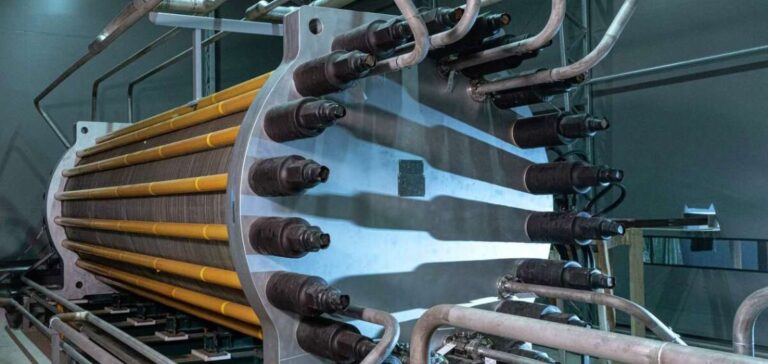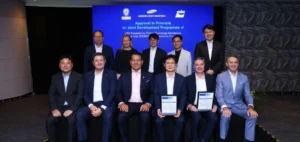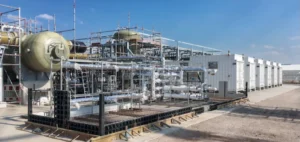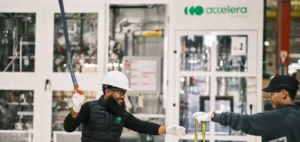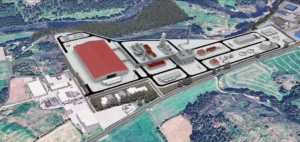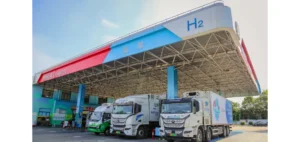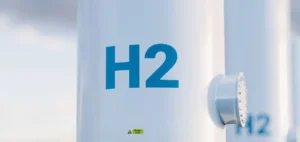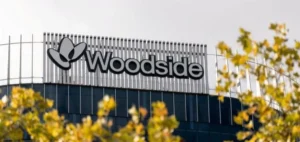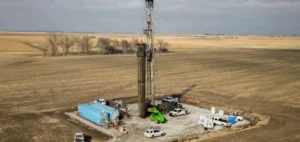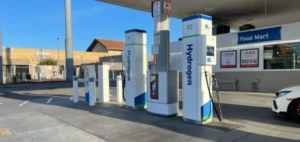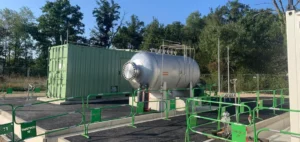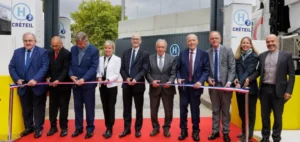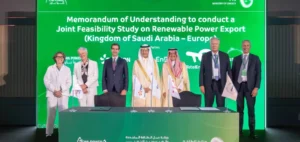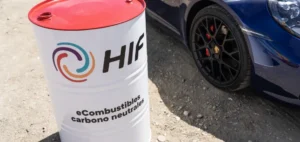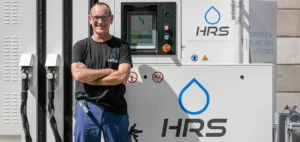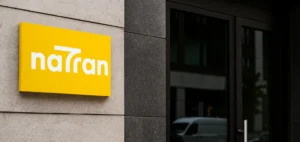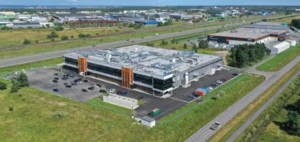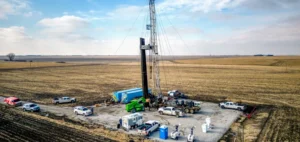Norwegian electrolyzer manufacturer HydrogenPro has increased the number of front-end engineering studies for the green hydrogen projects it is involved in, as final investment decisions for large-scale projects continue to lag, the company said on August 15.
Solid Growth Strategy: HydrogenPro Accumulates 3.3 GW of FEED Studies
The company is engaged in FEED studies totaling 1.3 GW of capacity, with a further 2 GW of FEED studies at the contract negotiation stage, said new CEO Jarle Dragvik in an online presentation.
“Final investment decisions are still somewhat behind schedule, and exponential development needs to be deployed over the next few years to meet the expected demand for green hydrogen,” HydrogenPro said in a statement.
Dragvik said that negotiating the contract takes time, but involvement in FEED studies has positioned the company well for future electrolyser orders while generating revenue. HydrogenPro said new market research showed that “large industrial players” in the energy and utilities sectors dominated the large-scale green hydrogen landscape, given their access to capital and project execution capabilities. The company declared that its strategy was aligned with this objective.
“HydrogenPro’s sales pipeline growth remains robust with few project cancellations, contributing to a growing base of solid major projects in core markets, despite a tendency to delay project FIDDs,” he said. “Historically, FEED studies are signs of mature projects close to FID.”
HydrogenPro Continues International Expansion with a Focus on the United States
The company has “substantial growth ambitions, particularly in the US”, said Dragvik. HydrogenPro is planning several IDFs in the United States over the next six months, where the Inflation Reduction Act should continue to support major projects dedicated to sustainable aviation fuels, synthetic fuels and ammonia.
The company is looking to expand its U.S. manufacturing capacity with a new 500 MW/year facility, on which it could partner rather than own, following what it said was a successful joint venture model at its 500 MW/year electrolyzer plant in China.
HydrogenPro said it has observed growing momentum in the European hydrogen space compared with recent quarters, and is expected to be involved in several FEED projects in 2023. HydrogenPro’s production partner ANDRITZ has secured a FEED study for a 200 MW smelter in Kristinestad, Finland, with FID on the full Koppo Energia project expected in Q1 2024, it said.
Dragvik said that by partnering with other companies on manufacturing and assembly, HydrogenPro would be able to grow its footprint faster, producing higher volumes while tying up less money in investment costs. The compromise with the asset-light approach was to give up a certain revenue per plant, he said.
HydrogenPro on the way to 100 MW/year hydrogen production
Its 100 MW/year manufacturing line in Denmark is ready to start production, with scaling possibilities to 400 MW/year, the company said. Platts, part of S&P Global Commodity Insights, valued alkaline electrolysis hydrogen production on the US Gulf Coast at $5.10/kg (including capital expenditure) on August 14, compared with $5.91/kg ($6.46/kg) in Europe (Netherlands).
Richard Espeseth, HydrogenPro’s founder and head of technology, said that tests on the company’s third-generation products indicated a 14% lower electricity consumption at 4.0 kWh per normal cubic meter of hydrogen production, and a 75% reduction in water consumption for cooling needs due to the low thermal efficiency of the process. He noted that the larger units the company produces have a better efficiency profile than the small and medium-sized electrolyzers.
However, complete electrolyzers don’t fit into standard shipping containers, and so require more planning around the supply chain for distribution. But core membrane and electrode technology can be embedded in standard units, Espeseth said. Change of management The company announced a strategic refocusing and an abrupt change of management on August 8. Dragvik replaced former CEO Tarjei Johansen, who had only been in post since December.
HydrogenPro: New CEOs, New Priorities and Growth Prospects
The company has had five different CEOs since 2020, with Espeseth stepping in as interim CEO in 2022, before appointing Johansen. Dragvik and Espeseth wouldn’t be drawn on the recent management changes, saying they were questions for the board.
When asked if he would be HydrogenPro’s new permanent CEO, Dragvik said, “First of all, what is permanent?” Before adding that the company is committed to developing its American team. HydrogenPro said on August 8 that it had revised its priorities to focus on the North American market, and was revising its fund-raising strategy to finance growth in an “unfavorable” market.
“The plan to build capacity in the US remains firm, but with current market sentiment, market financing is an unattractive proposition from a shareholder value perspective and the company is actively working on other ways to fund expansion,” the company said.
HydrogenPro had previously planned to finance its expansion mainly with equity from the issue of new shares.
The company now has its eye on a possible listing on the Nasdaq stock exchange “to ensure access to a wider universe of investors”, he said.
The company has had five different CEOs since 2020, with Espeseth stepping in as interim CEO in 2022, before appointing Johansen. Dragvik and Espeseth wouldn’t be drawn on the recent management changes, saying they were questions for the board.
When asked if he would be HydrogenPro’s new permanent CEO, Dragvik said, “First of all, what is permanent?”
The company is also committed to developing its American team. HydrogenPro said on August 8 that it had revised its priorities to focus on the North American market, and was revising its fund-raising strategy to finance growth in an “unfavorable” market.
“The plan to build capacity in the US remains firm, but with current market sentiment, market financing is an unattractive proposition from a shareholder value perspective and the company is actively working on other ways to fund expansion,” the company said.
HydrogenPro had previously planned to finance its expansion mainly with equity from the issue of new shares.
The company now has its eye on a possible listing on the Nasdaq stock exchange “to ensure access to a wider universe of investors”, he said.


